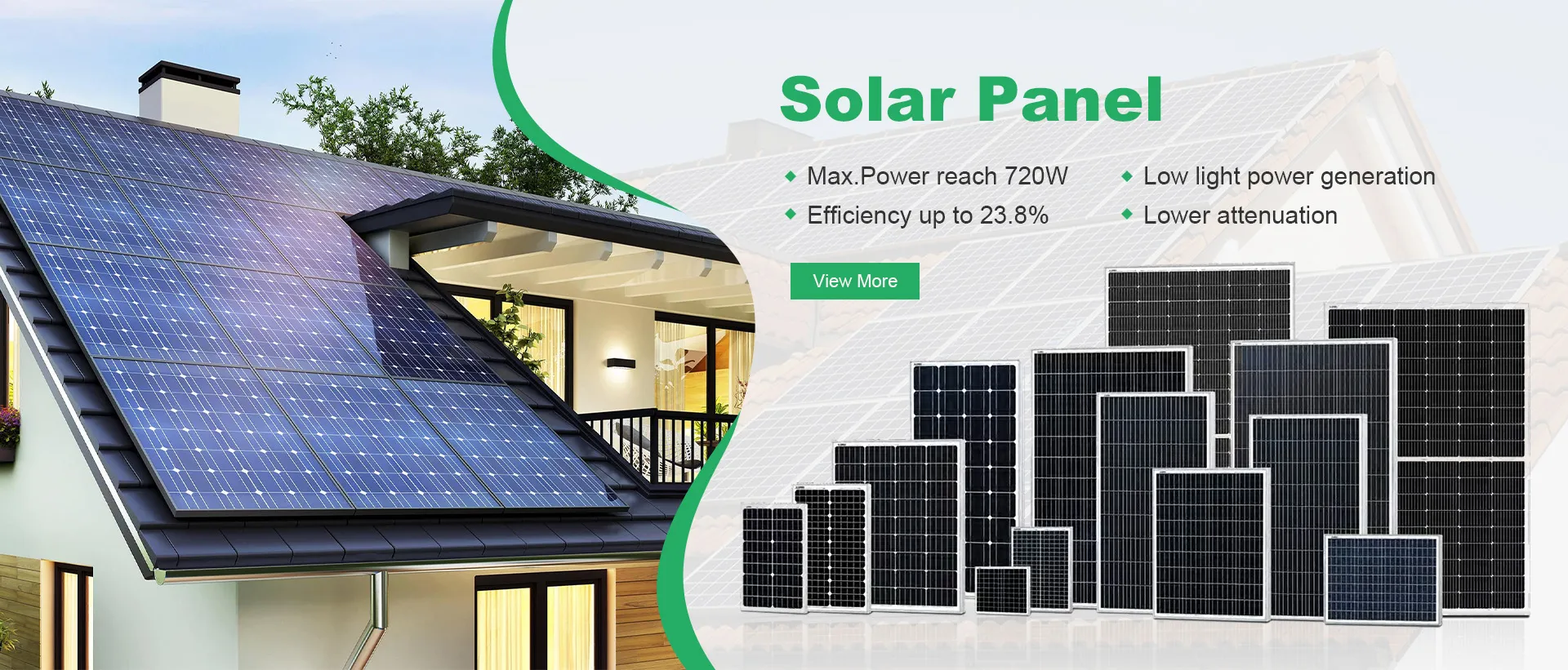Comparing Bifacial and Monofacial Solar Panels for Enhanced Energy Efficiency and Performance
Bifacial Solar Panels vs. Monofacial Solar Panels A Comprehensive Comparison
As the world increasingly shifts towards renewable energy, solar power remains at the forefront of this transition. Among the various types of solar panels available in the market, bifacial and monofacial solar panels are two popular options. Understanding the differences between these two technologies can help consumers, businesses, and policymakers make informed decisions regarding solar energy investments.
What Are Monofacial Solar Panels?
Monofacial solar panels are the traditional solar panels that most people are familiar with. They consist of a single layer of solar cells mounted on a backing material, usually glass. These panels capture sunlight on one side, converting it into electricity through photovoltaic (PV) technology. Monofacial panels have been widely used for years due to their reliability, efficiency, and availability. Typically, they offer an efficiency rating between 15% and 22%, depending on the technology and manufacturer.
Understanding Bifacial Solar Panels
Bifacial solar panels, on the other hand, feature solar cells on both sides. This design allows them to capture sunlight not only from the front side but also from the rear side. By utilizing reflected sunlight from the ground or surrounding surfaces—like snow, sand, or white rooftops—bifacial panels can generate additional electricity. This capability can enhance their overall efficiency, with some bifacial models achieving efficiencies higher than 25%.
Performance in Different Conditions
bifacial solar panel vs monofacial

One of the most significant advantages of bifacial solar panels is their ability to harvest more energy in various environmental conditions. For example, when installed in snowy areas, bifacial panels can take advantage of the sunlight reflected off the snow, resulting in increased energy production. Similarly, in regions with lighter gravel or sand, the reflection can boost performance as well. In contrast, monofacial panels are limited to capturing direct sunlight, which can restrict production, especially in suboptimal weather conditions.
Cost and Return on Investment
When considering the financial aspect, bifacial solar panels tend to have a higher upfront cost compared to monofacial panels. The additional manufacturing complexity and materials used in bifacial technology often make them more expensive to produce. However, the enhanced energy yield can lead to a shorter payback period over time. As a result, the long-term return on investment (ROI) for bifacial panels can be more appealing, especially in suitable environments that maximize their reflective capabilities.
Installation and Aesthetic Factors
Installation considerations also play a role in the choice between bifacial and monofacial panels. Bifacial panels generally require special mounting systems that elevate them above the ground to maximize their exposure to reflected sunlight. This can make installation more complex and potentially more expensive. Aesthetic factors may also come into play; bifacial panels often have a sleek design due to their dual-sided configuration, appealing to consumers who prioritize visual impact.
Conclusion
In conclusion, both bifacial and monofacial solar panels have distinct advantages and disadvantages. Monofacial panels remain a reliable, cost-effective option for many consumers and businesses. However, bifacial panels offer a promising alternative, particularly in suitable conditions where their ability to capture reflected light can significantly boost energy generation. When deciding between the two, individuals and organizations should consider their specific energy needs, budget constraints, and environmental conditions to make the most informed choice. As solar technology continues to evolve, understanding these differences will be crucial in optimizing energy production and advancing the adoption of solar power.
-
Understanding the Advantages of Solar String Inverters for Your Energy SystemNewsApr.29,2025
-
Choosing the Right PV Inverter: A Comprehensive GuideNewsApr.29,2025
-
The Future of Solar Power: Exploring Bifacial Solar PanelsNewsApr.29,2025
-
The Complete Guide to Solar Panels: Efficiency, Cost, And InstallationNewsApr.29,2025
-
The Best Options for Efficiency and Cost-EffectivenessNewsApr.29,2025
-
Harnessing the Power of Off-Grid Solar Inverters for Energy IndependenceNewsApr.29,2025







